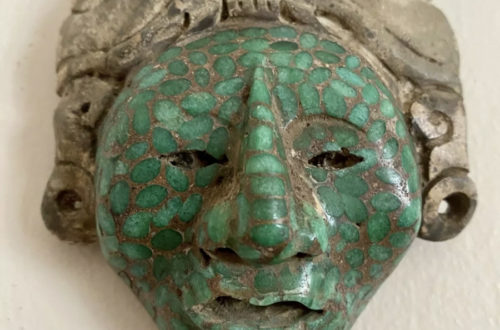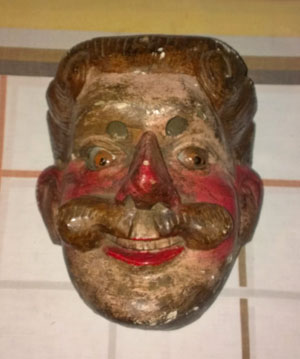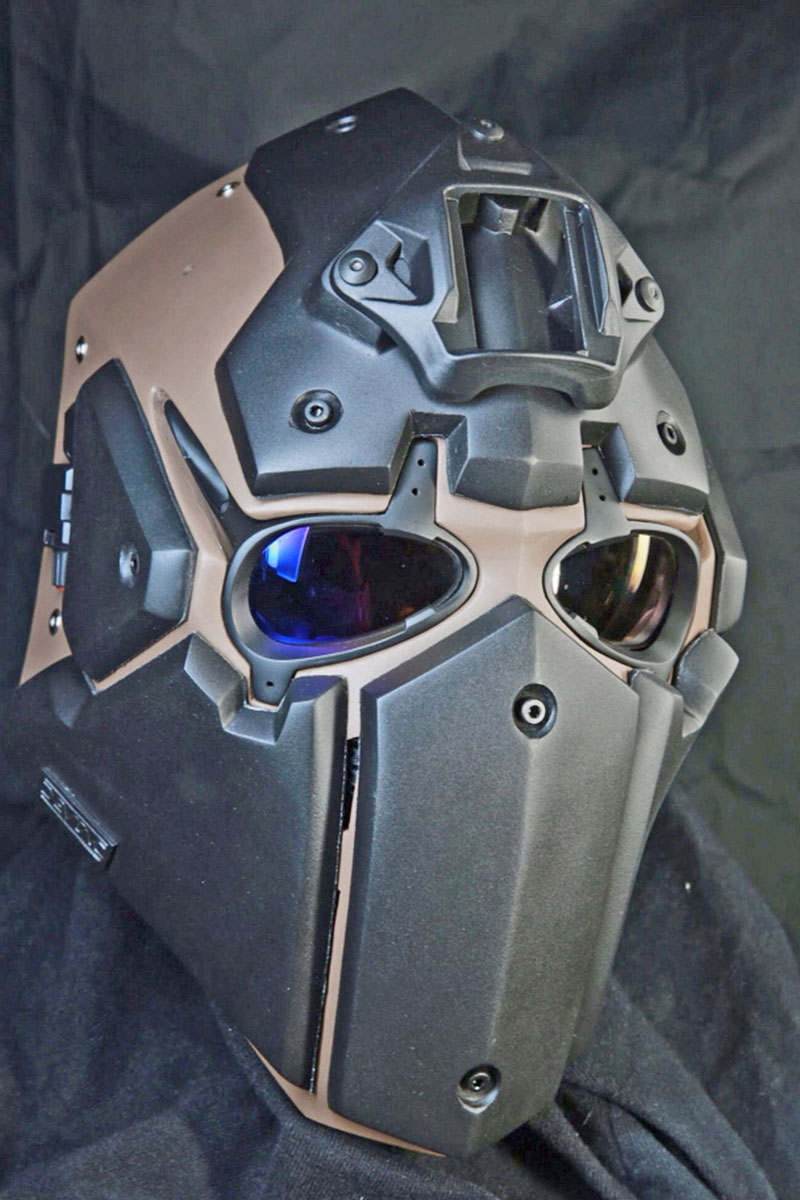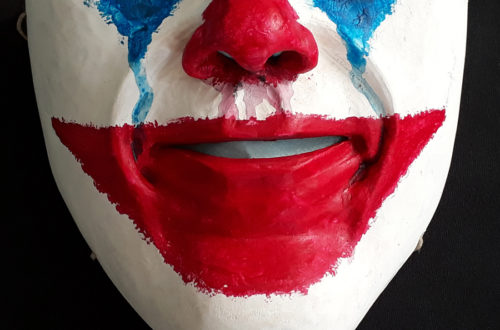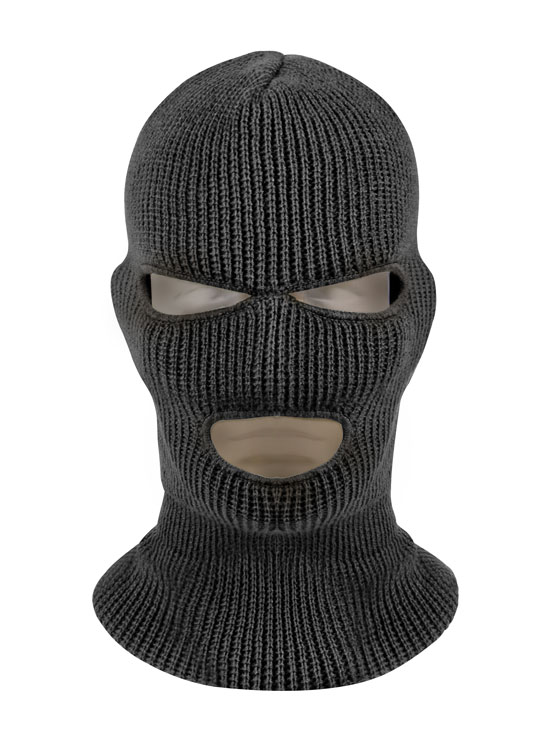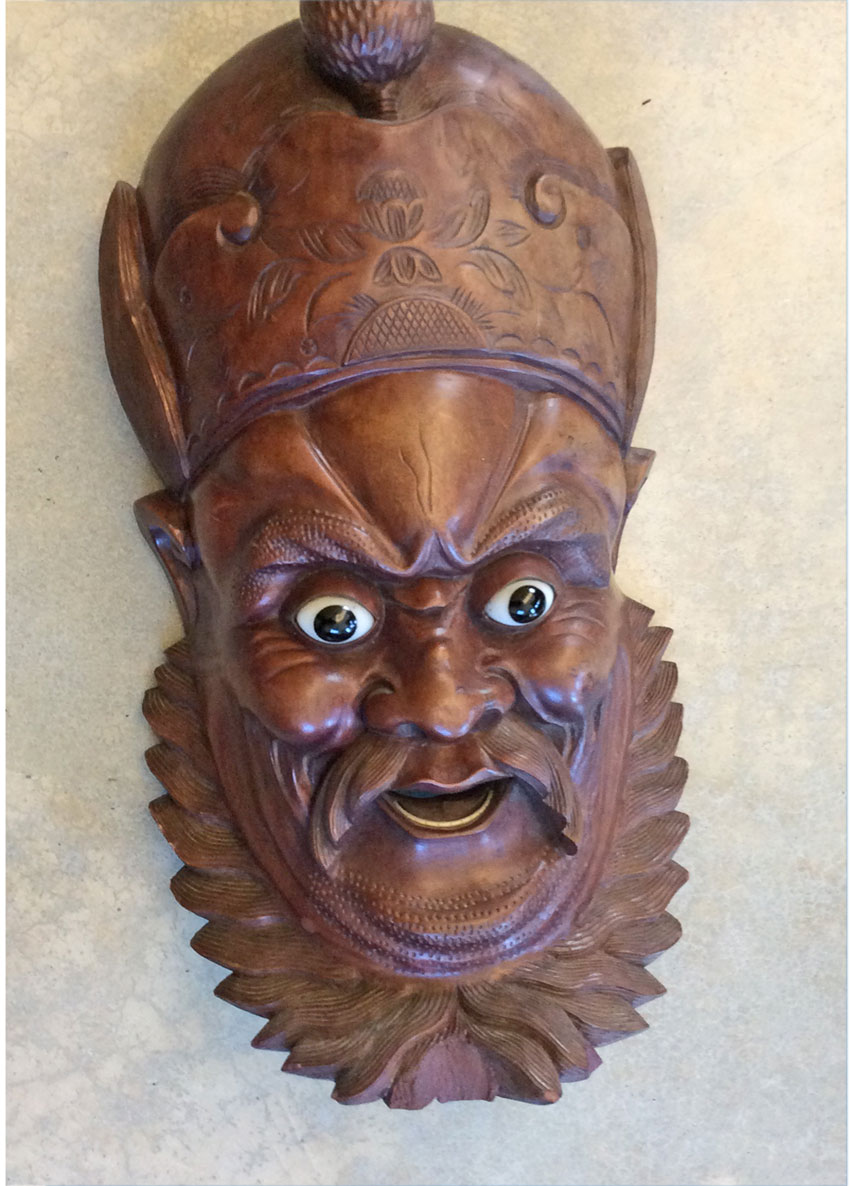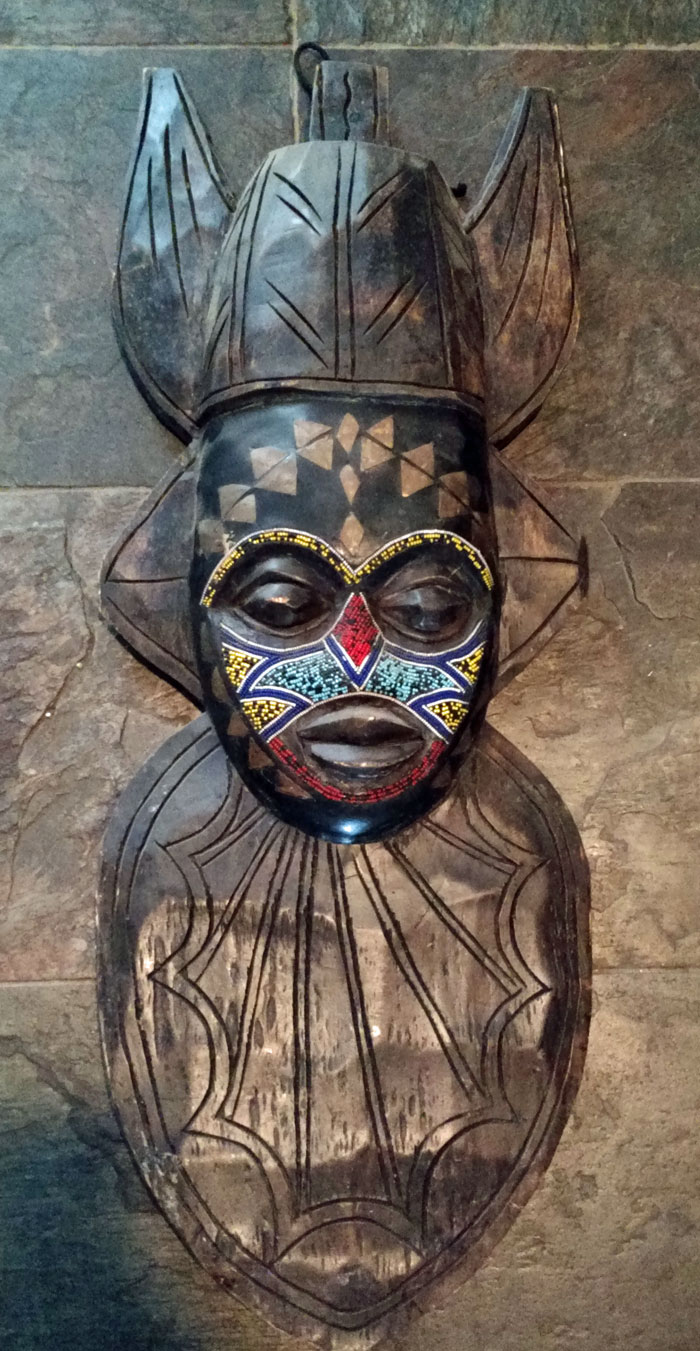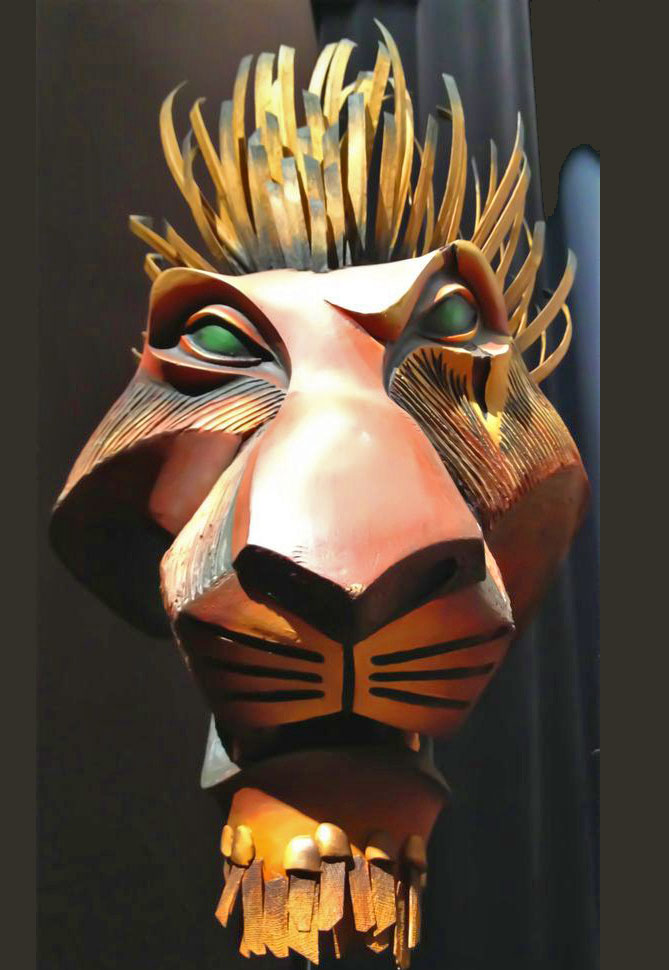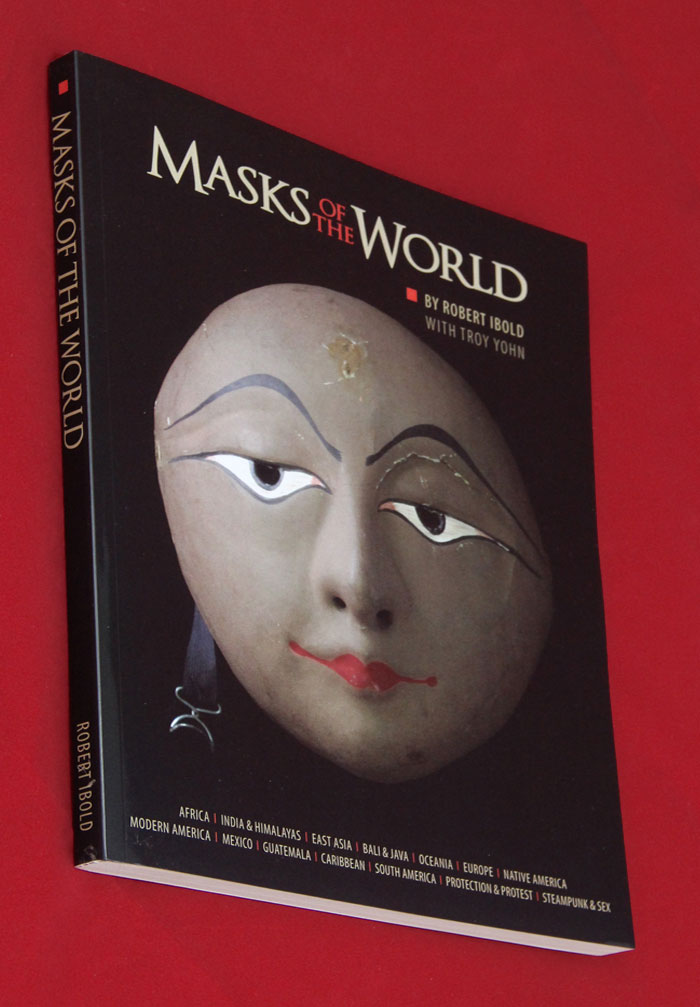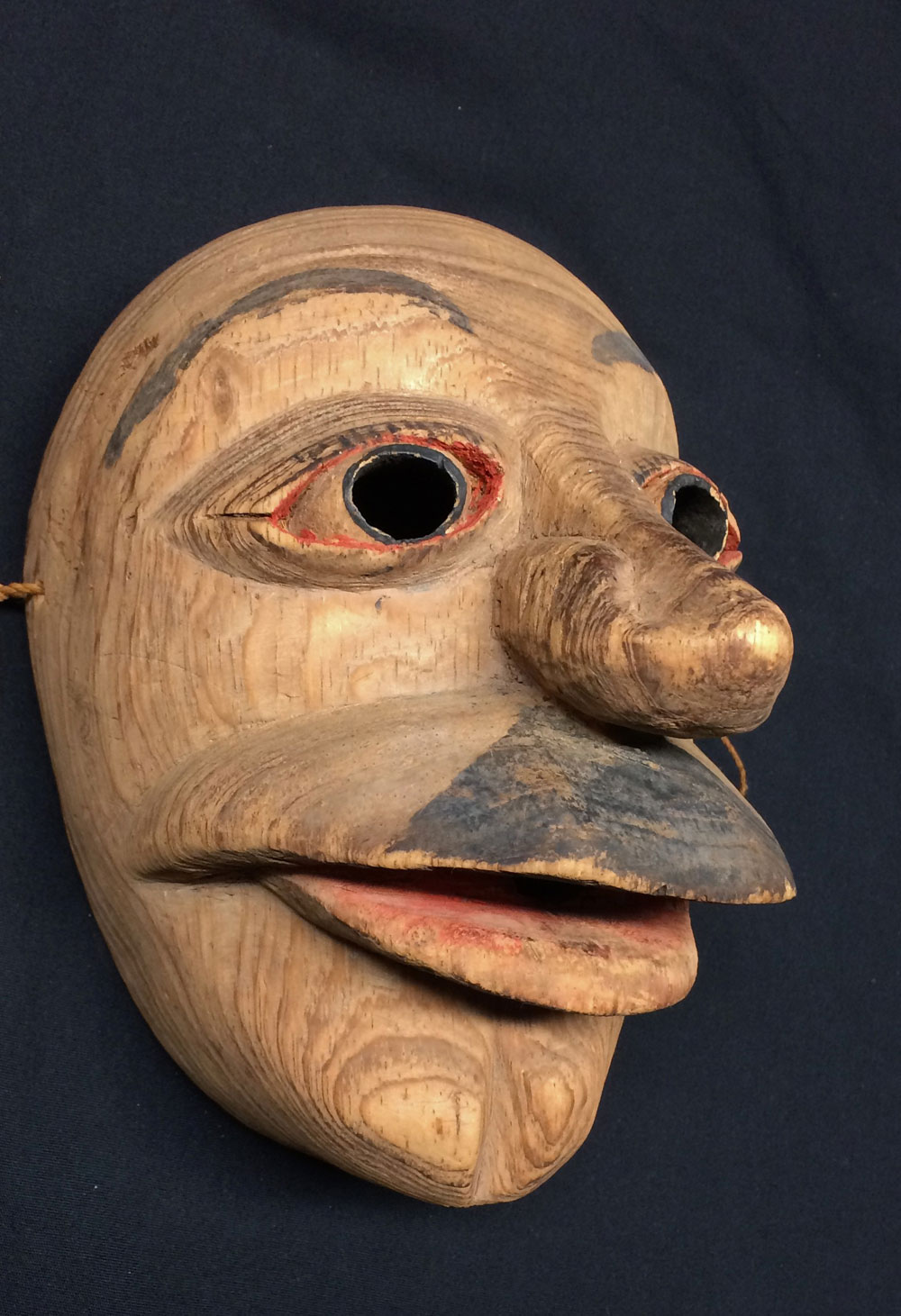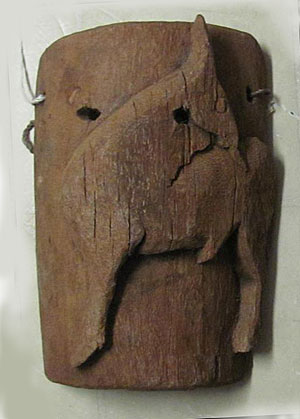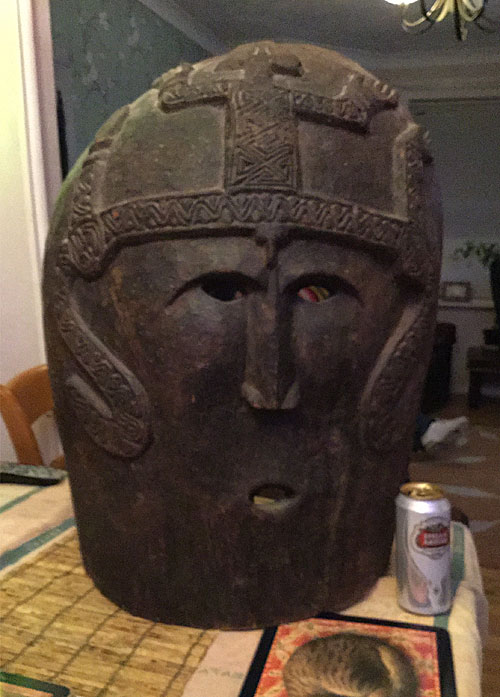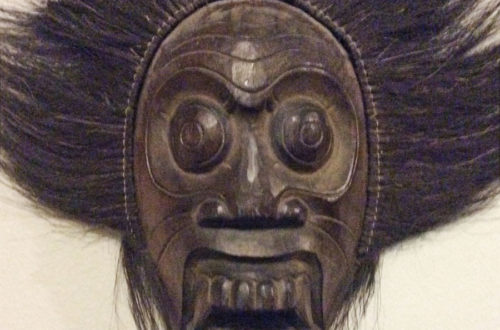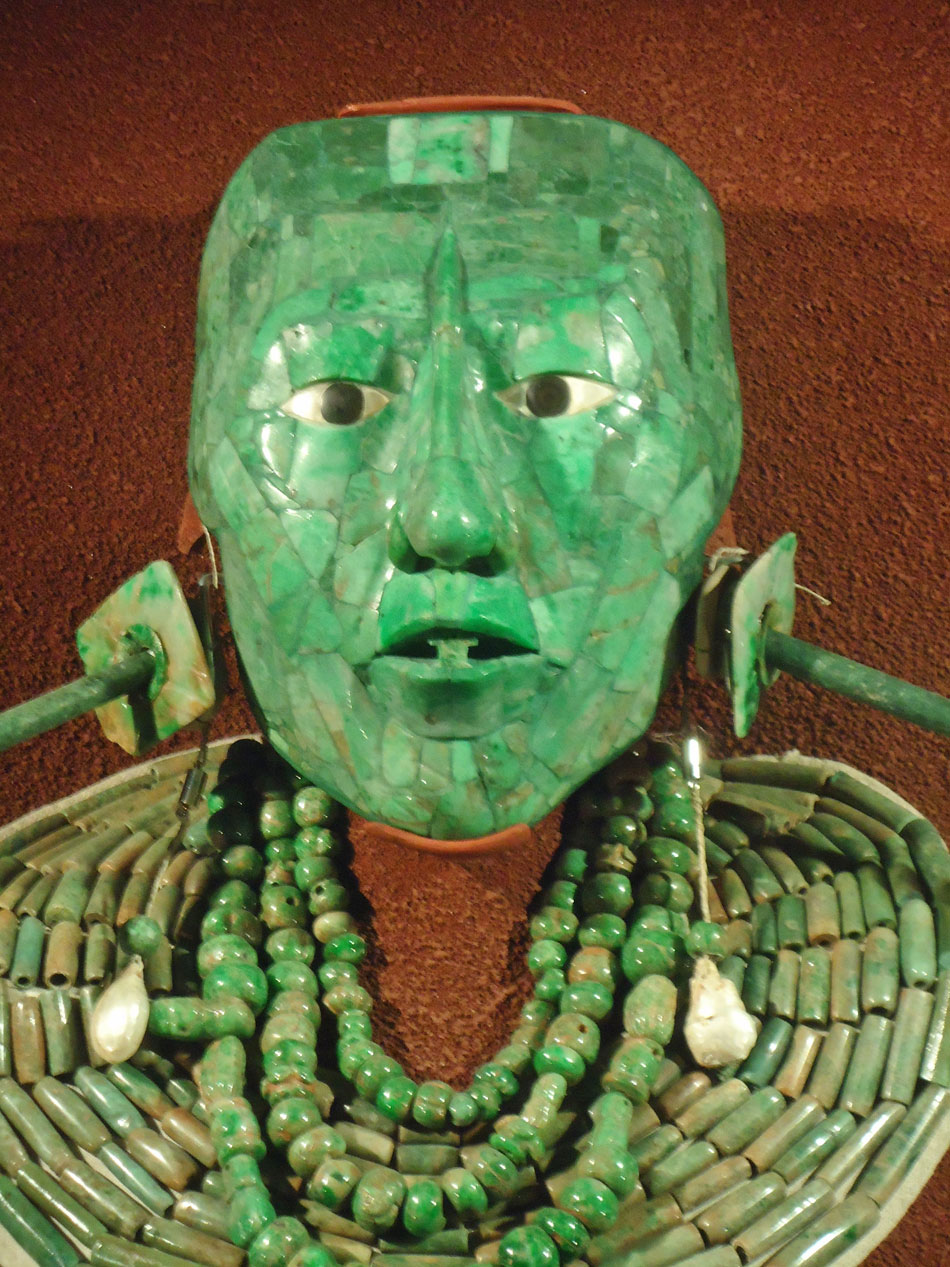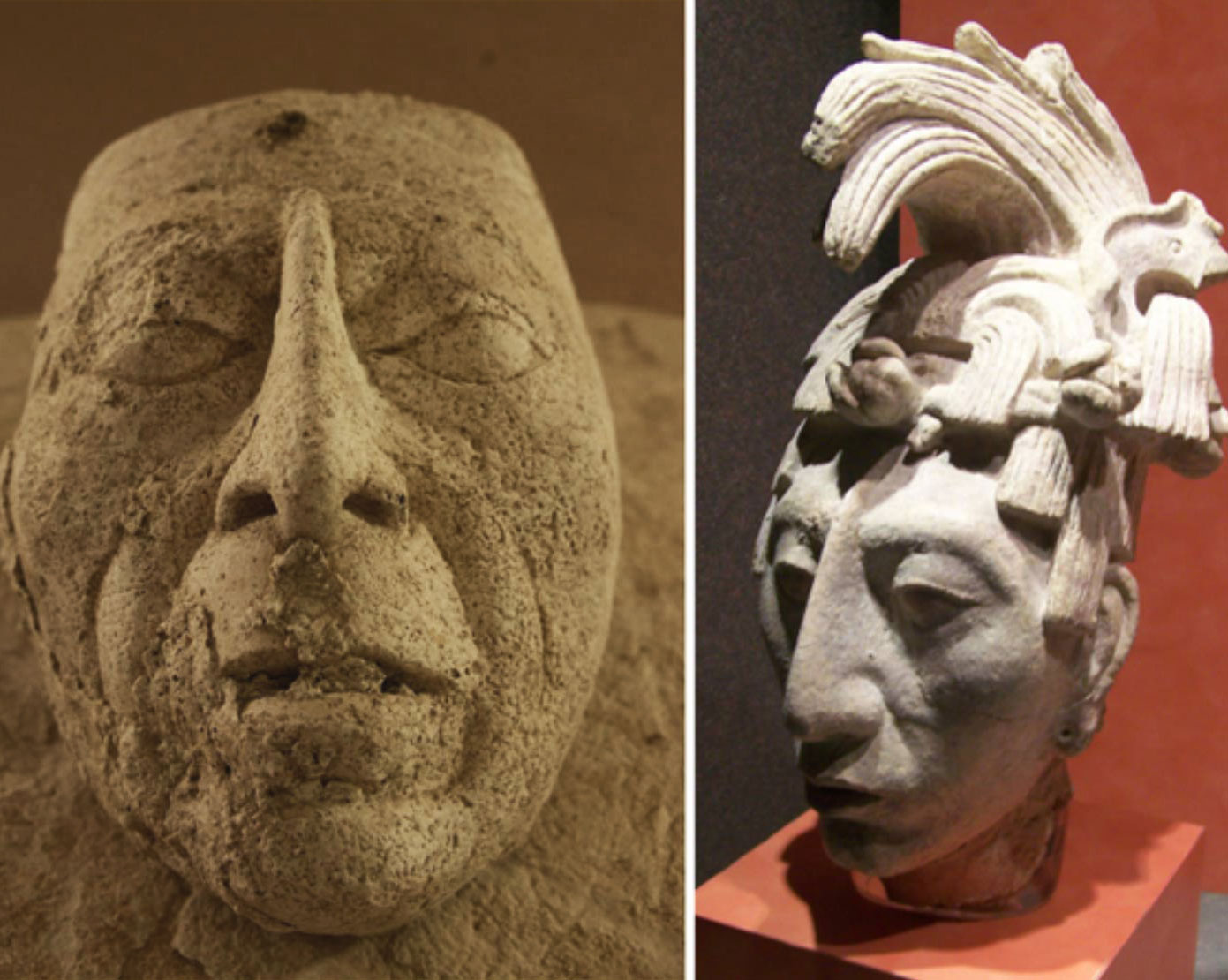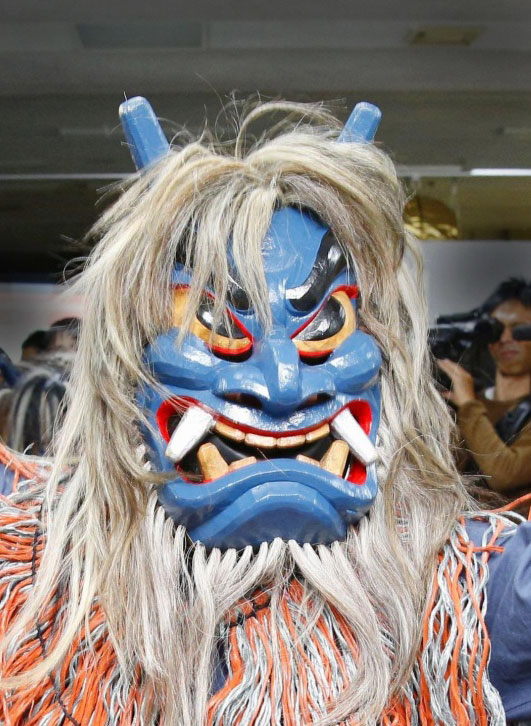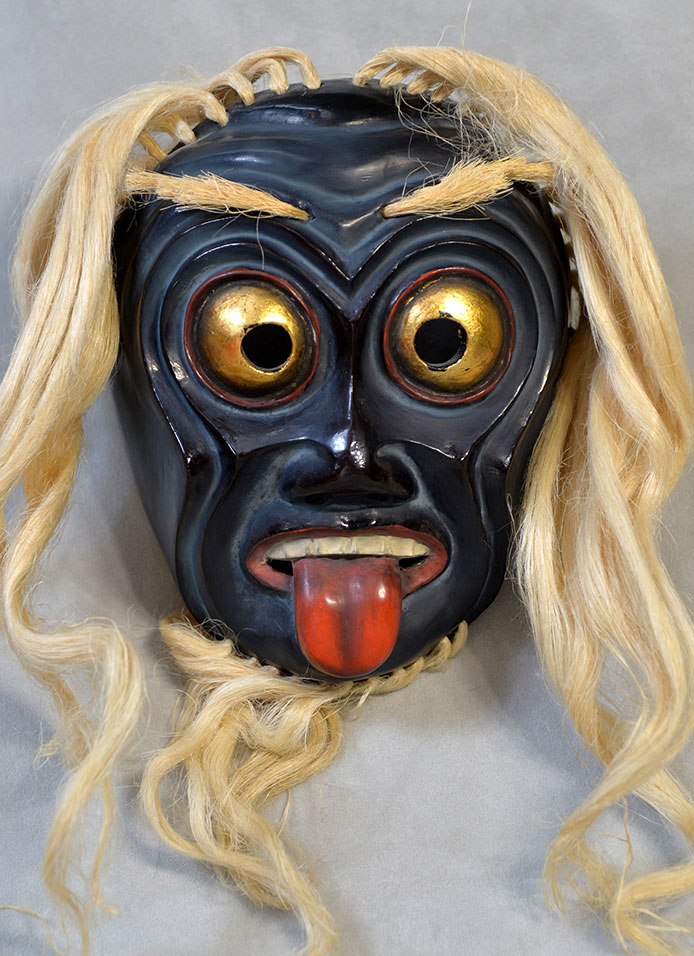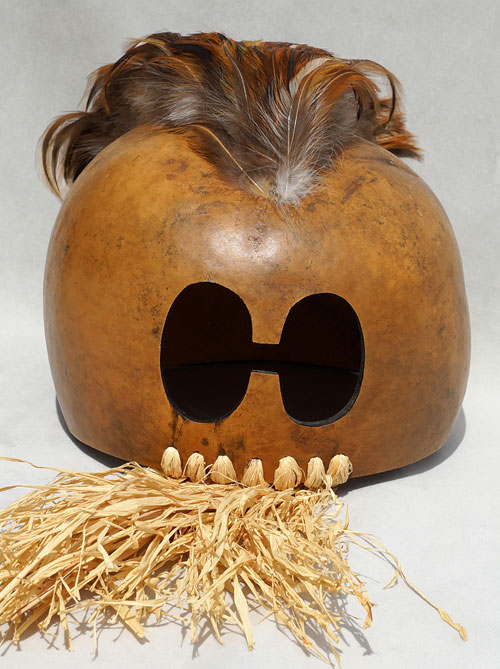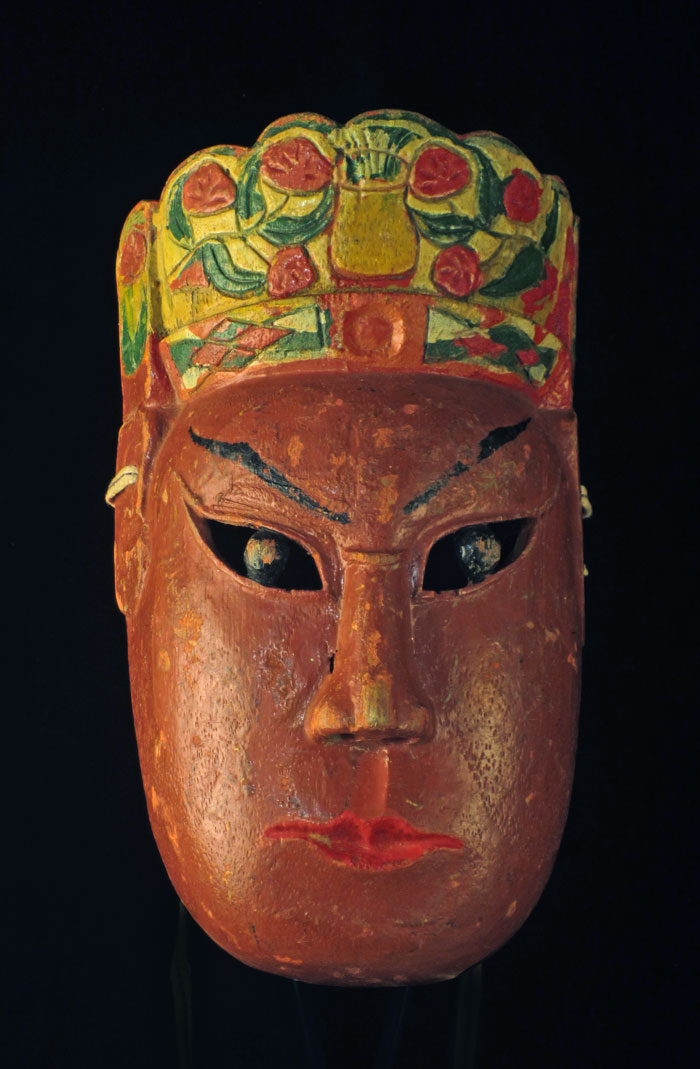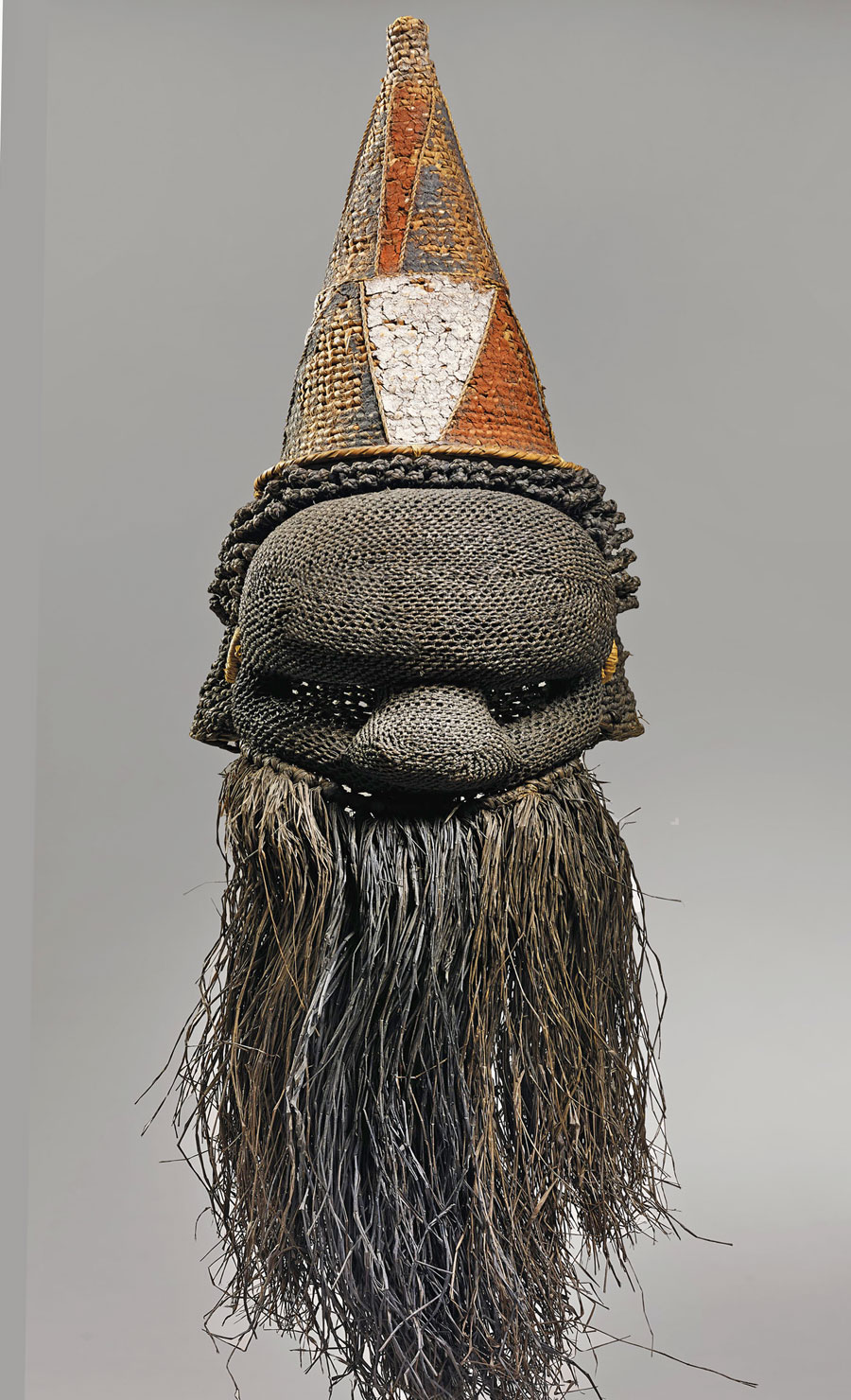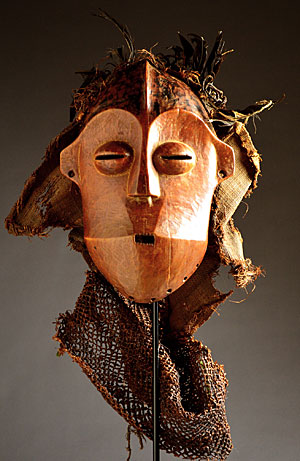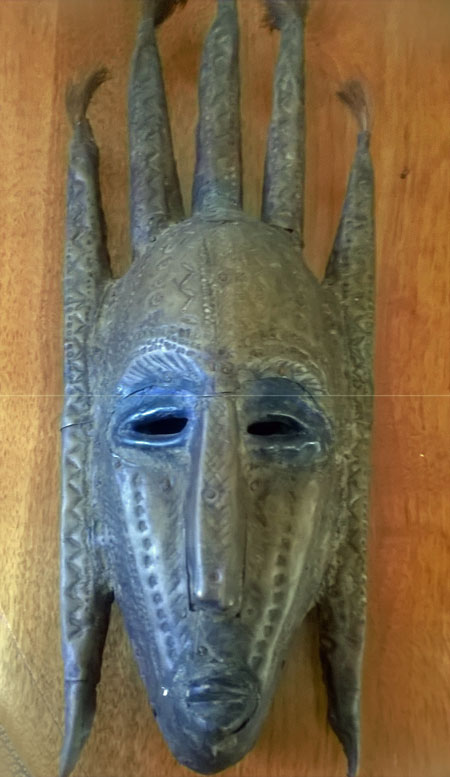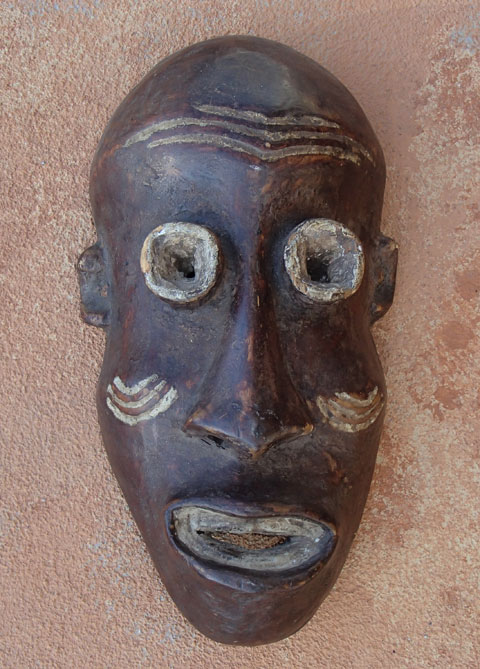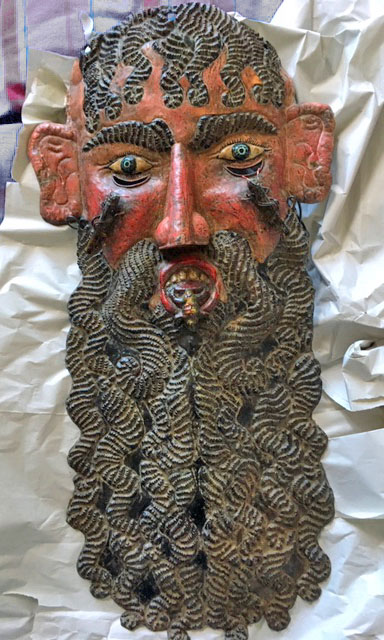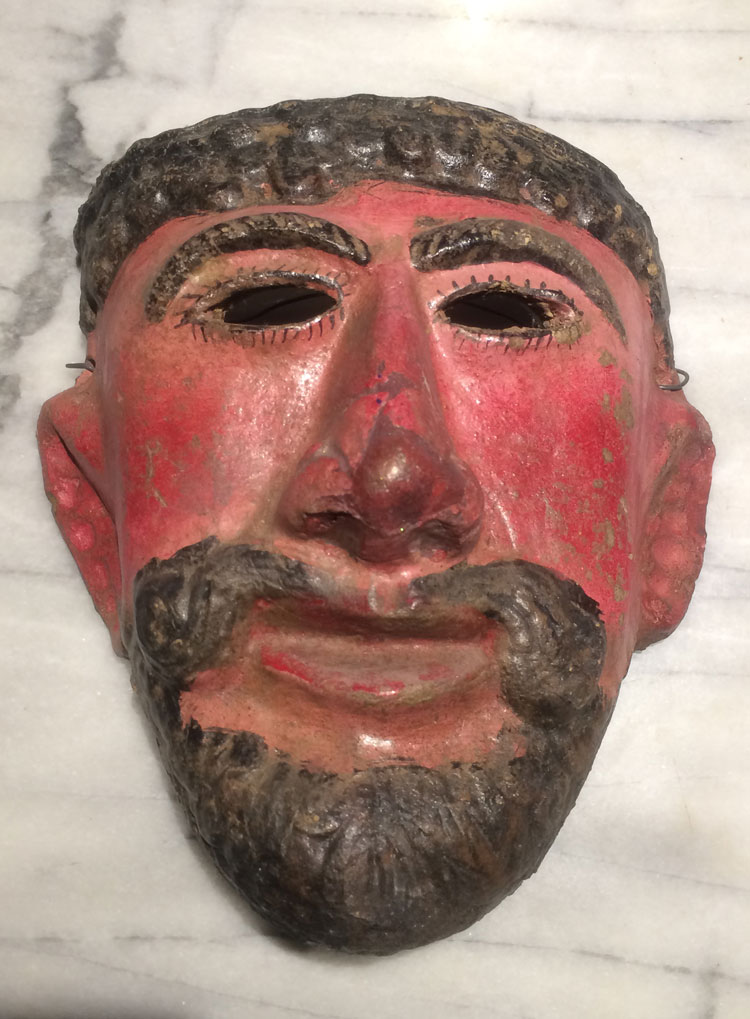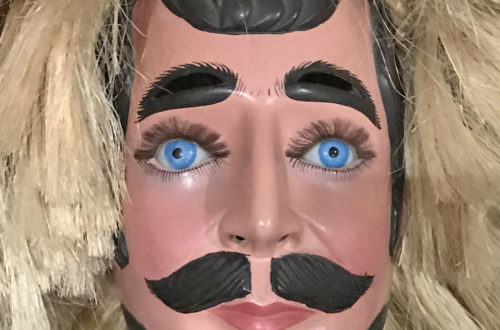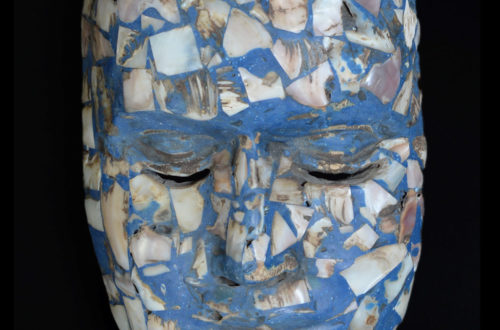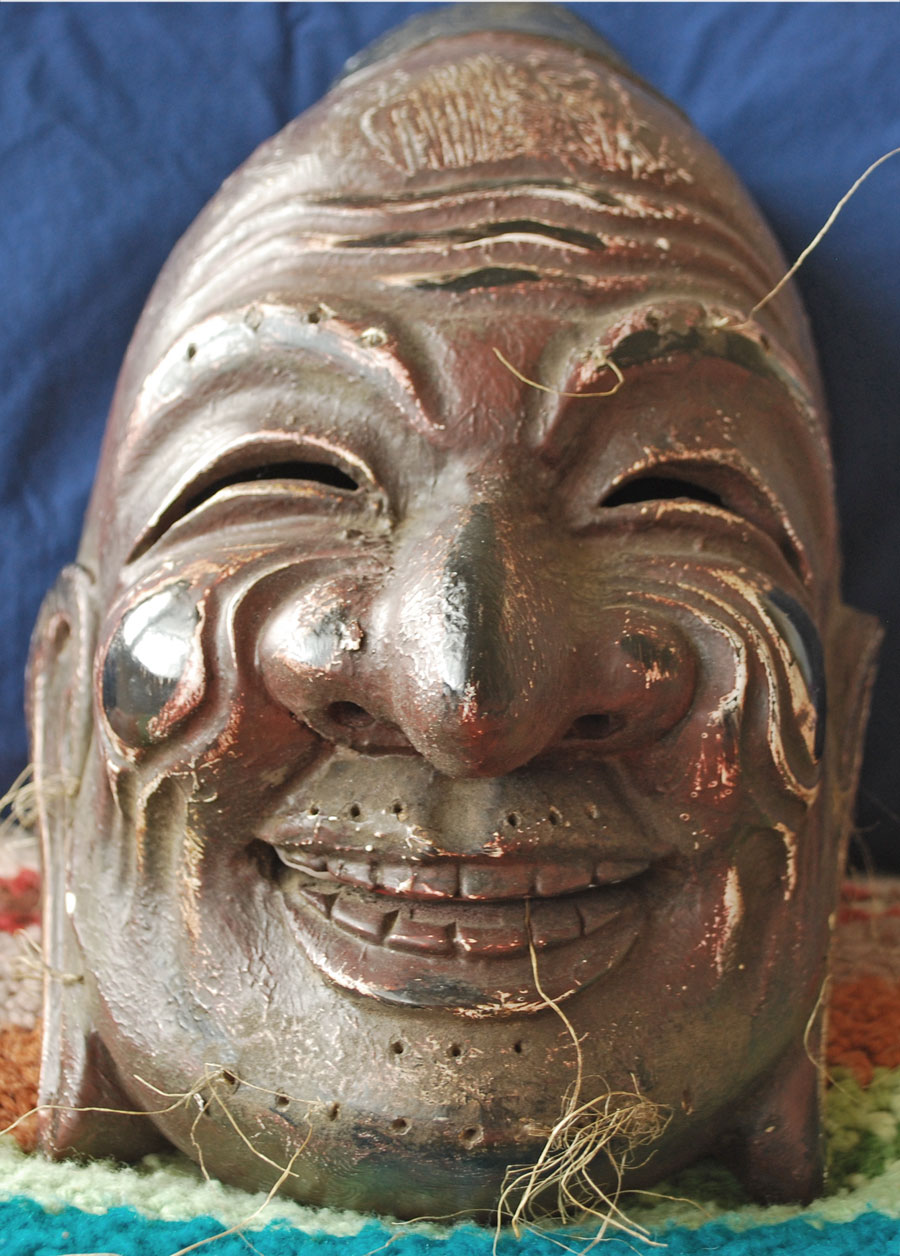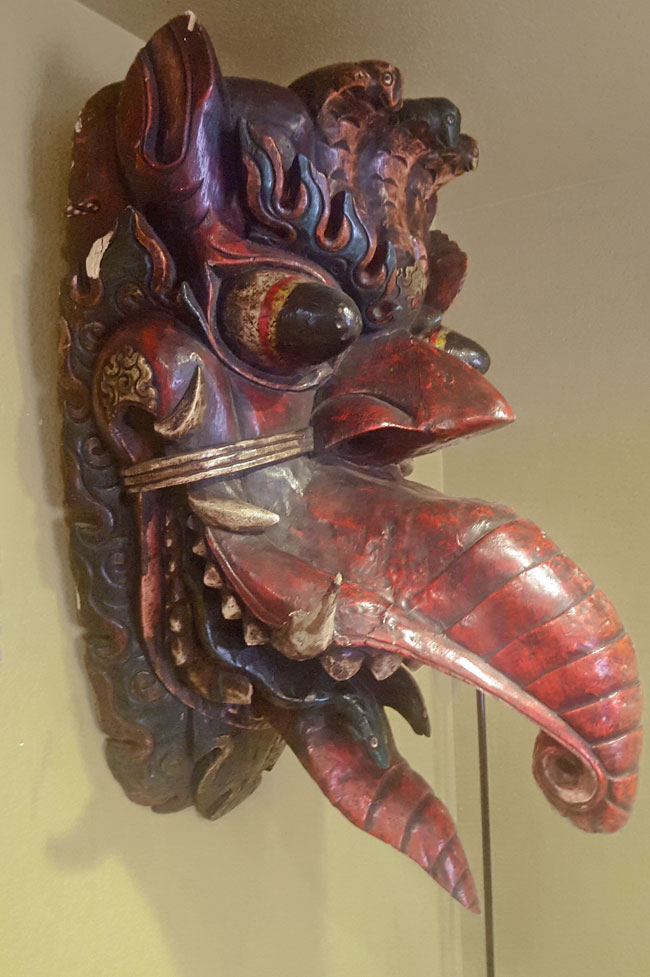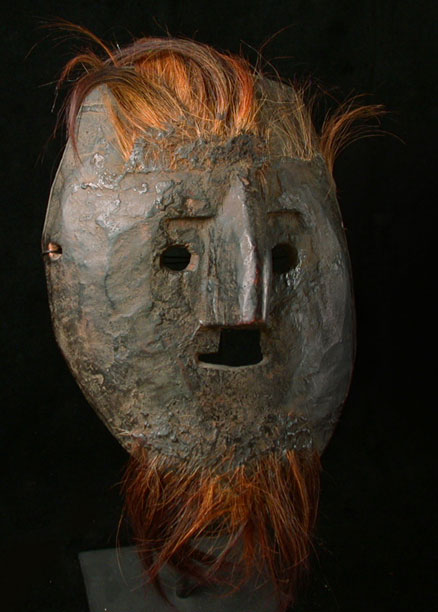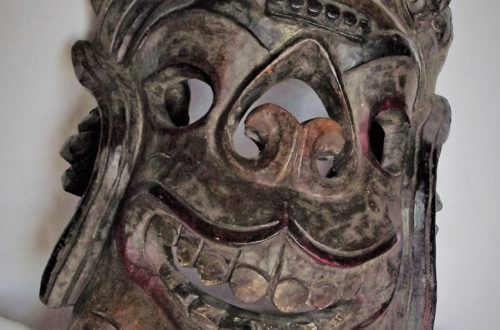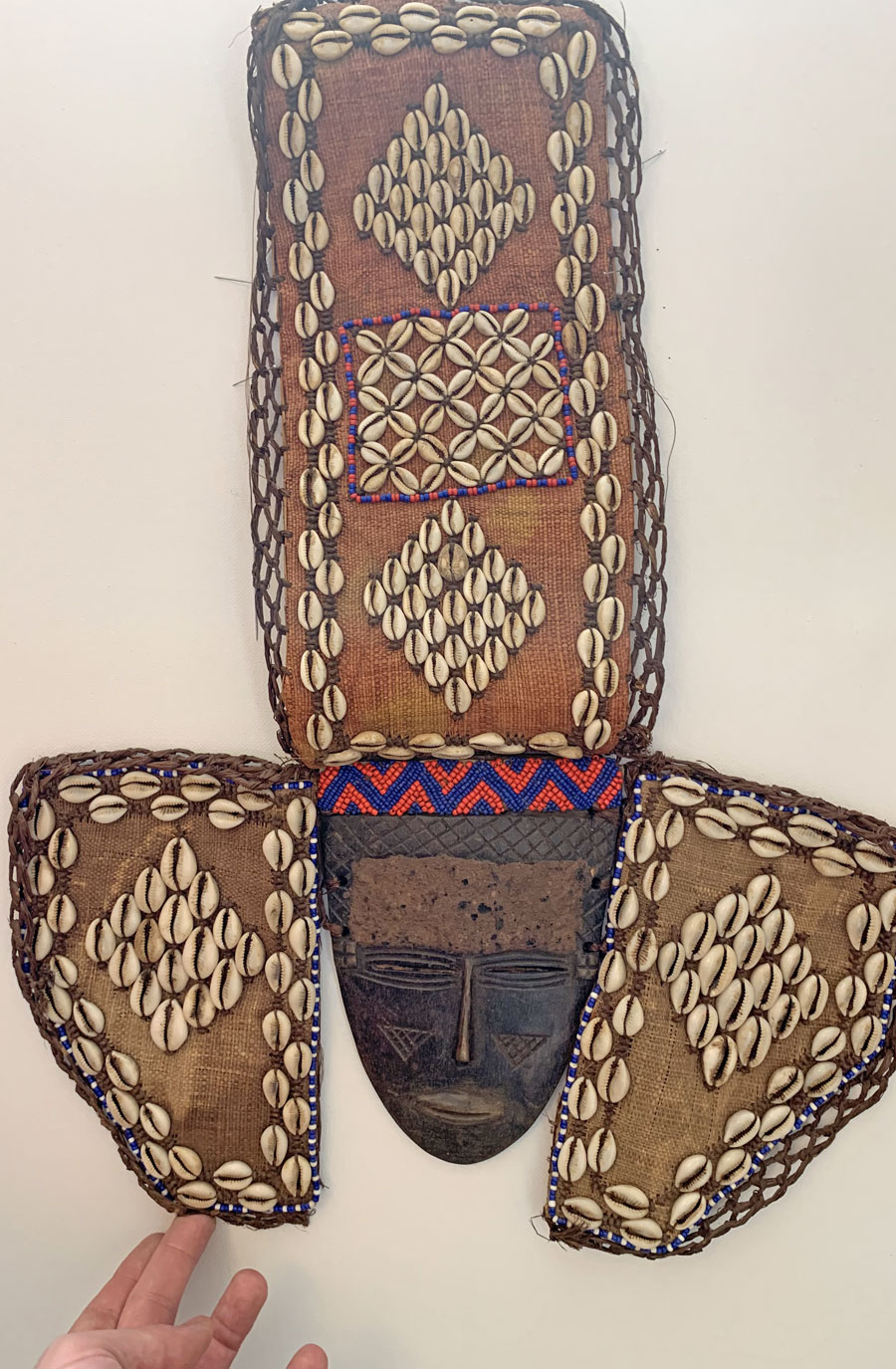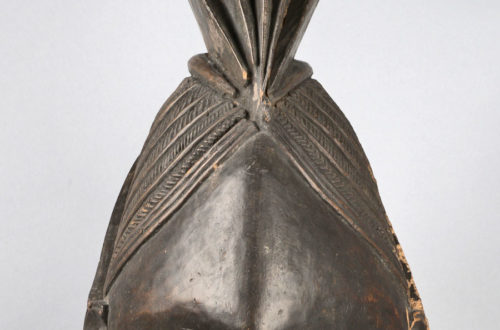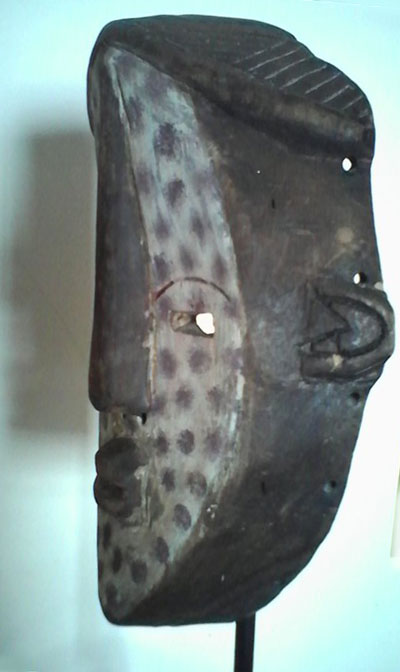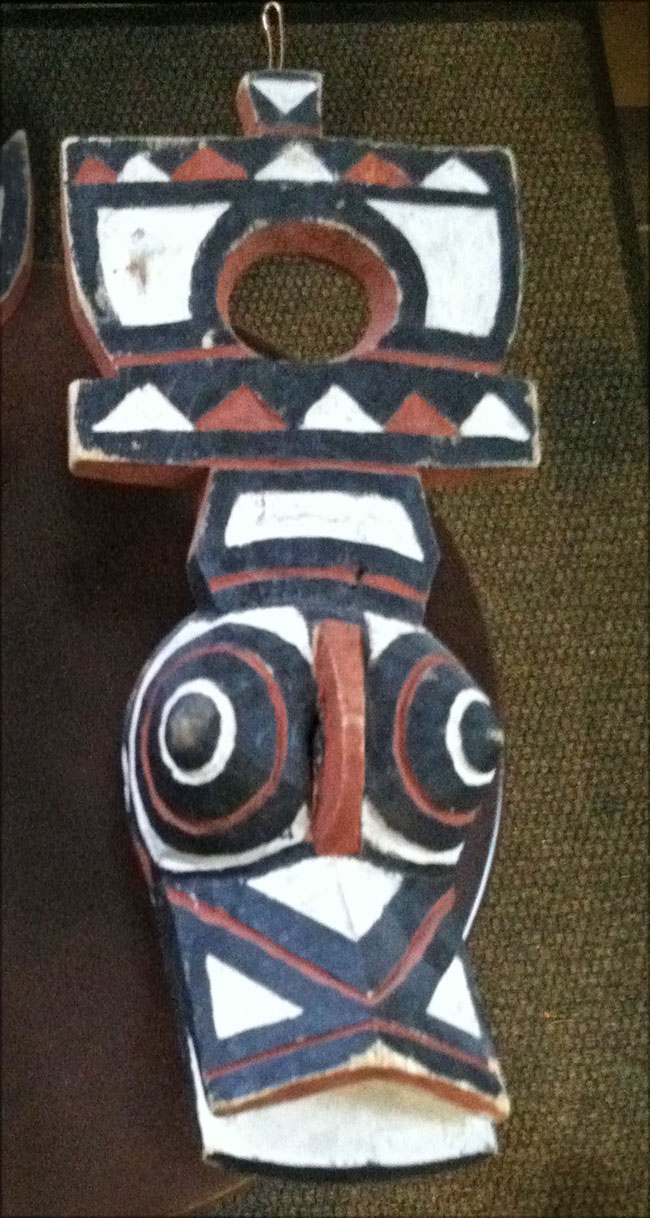Q: Did you ever see this mask? It is a rarely seen Guatemalan mask. It represents Alwasiir, the green devil in the Baile San Jorge in Rabinal and El Diablo. He is called Murcielago in the Baile La Princesa in Coban. Both dances tell the story of St Georges. This one is probably from mid to late XXth century. Jean, 1542 A: I have not seen it before– only green devils with horns from other areas in that small country. It is indeed rare and in new condition. I suppose the dark brown stain on the rear was applied to attract a wealthy tourist who prefers masks that are old…
-
-
New protective mask
Occasionally I like to remind our visitors that we also include masks beyond the realm of ethnography. On the site we have a category called “Protection” in which you will find a broad assortment of masks used in many different occupations including sports. Please take a look. The bulletproof mask shown here is one of many new designs for the police and military. If you search the internet you can find a few old designs as well. To a mask collector bulletproof is now an interesting sub-category. You can find new ones retailing for as low as $100. A
-
Decorative art– not masks
Q: I get questions (with three attached scans) almost every day. Most of the time these “mystery masks” are quickly made carvings for the tourist trade that have little artistic value and no ethnographic significance. Often they were from thrift shops. These three are of some value. A: The first one is from someplace in China where they have a group of master carvers who have been making these mask-like sculptures for many years. They are always highly detailed and sometimes have glass eyes. Second is a heavy ceramic wall-hanging from Mexico which resembles a pre-Columbian god. I think it is a handsome piece of decorative art. Unfortunately, the sellers…
-
Another mystery mask
Q: I bought this mask at an estate sale about 10 years ago. The individual had about 50 masks in his collection, but with no real focus. Many were tourist pieces… a number from South and Central America. This one was tucked away in a corner… but had no identification. I like Japanese art and this struck me as perhaps an older Noh mask, but there was nothing the family new… or anything with the mask that would give me any indication of history. It is a light wood (almost like balsa) and you can see the grain. The painting detail is rather primitive. I’m good at searching online usually……
-
Death mask of Pakal the Great
Q: Have you seen this? Thought you might enjoy it. Death Mask of Pakal the Great The striking jade death mask of an ancient Mayan king is displayed in a replica tomb in Mexico City. http://www.atlasobscura.com/places/death-mask-of-pakal-the-great?utm_source=share_by_email&utm_medium=email&utm_campaign=mailto_share Derek, 1538 A: When I was studying at Mexico City University in 1956 I took some time off and went to the recently discovered ruins of Palenque in the jungles of Yucatan. It was difficult to reach, and because it was a Mexican holiday, there were no workmen there. My traveling companion and I climbed to the top of the pyramid, cranked up the generator, plugged in a string of lights and did some…
-
Japanese Namahage mask
These are widely used in many parts of Japan on New Years Day, making them one of the most popular masks you can buy. They are quickly carved and reasonably priced so everyone can afford them. But you won’t often see them in books, museums or important collections because they’re for the common people. That may change. This terrifying demon-like deity has just made the United Nations’ Intangible Cultural Heritage list. During the holiday, wearing ogre masks and wielding huge knives, Namahage go from house to house shouting “are there are any crying or badly behaving children?” Invariably, the answer is yes and often the tears start before they even…
-
Fabric Salampasu mask from DRC
The 60,000 Salampasu people live east of the Kasai River, on the frontier between the Democratic Republic of the Congo and Angola. Their name is said to mean “hunters of locusts”, but they were widely viewed with terror by adjacent groups. They maintain strong commercial and cultural relations with their southern neighbors, the Chokwe and the Lunda, to whom they pay tribute. The Salampasu are homogeneous people governed by territorial chiefs, who supervise village chiefs. Their hierarchical power structure is counterbalanced by a warriors’ society. A people with a reputation as fearless warriors, the Salampasu have retained the custom of a rough and primitive life. Warring and hunting are privileged…
-
The infamous Barbones mask from Mexico
Q: Can anyone give me any meaning of this mask? How could it have been used? Jan, 1535 A: They started making these stunning masks out of silver in the mining town of La Parota, Guerrero, way back in the Victorian period. Well over 100 years ago wealthy gringos were vacationing in Mexico and they loved these hammered-metal masks as decorative souvenirs. Later they switched from silver to the cheaper copper you see here, and they are still popular to this day. The first edition of Donald Cordry’s Mexican Masks came out in 1980 and became a big seller that created a great interest in this subject. Cordry loved masks…
-
New Kathmandu tourist mask
Q: I received this Himalayan region mask just ten days ago on an ebay auction for $50. It is about 12 inches high and has numerous small holes for hair, some of which is left. I hope that it interest you. Steve, 1534 A: I’ve seen a few of these lately. They are probably from Nepal or NW China. I like the way they look, but I can’t tell you anything more about them. C
-
Lele mask from DRC
Q: I purchased this in DRC in 2010. Ben, 1533 A: Normally I need to get more information from people who want me to identify their Mystery Mask. No problem here. I know exactly what this one is. I found that AfricaDirect.com has an almost identical piece for sale. Here’s what they have to say. I haven’t changed their spelling. Like Ben’s mask, their Lele is a carefully made reproduction you can buy for a low price. An equally handsome authentic version of the same mask could not be afforded by 99% of us. The Leele live in the confluence of the Sankuru and Kasai Rivers in territory which adjoins…


